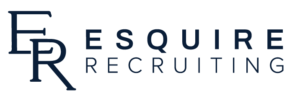Resume Problem: What Not to Include
I’m sure many of you have read blogs which help you navigate components and attributes to include on your resume. However, the problem with these types of articles is that they likely will not tell you what not to include on your resume. Keep reading to find out how to avoid common mistakes made on resumes!
- Over the Top: Due to the fact that almost all recruiters, hiring managers, and employers scan through hundreds of resumes on a weekly basis, they are constantly looking for easy reasons to weed out the application pool. One way that a resume may be tossed off the bat is by the physical presentation. If a resume is covered in colors, outrageous fonts, or an elaborate layout, a recruiter will likely overlook it immediately. Make sure to keep your resume user-friendly by utilizing softer colors (greys, dark blue, black), universally recognized fonts, and an easy-to-follow layout.
- Keyword Loss: Another way recruiters narrow in on prospective candidates is by using resume filters. If you do not emphasize key components of your resume (education, location, job title, contact information, etc.), you will make it a lot more difficult for a recruiter to stumble across your page! Make sure to exhibit all important information on your profile and resume.
- Disorganization: In relation to stylistic elements, a layout of a resume also includes the appropriate organization. You must showcase your most recent accomplishments first, followed in chronological order, or else recruiters will have a problem understanding your professional timeline.

- Lack of Personality: Although it may appear difficult to “tell your story” on your resume, make sure to include some sense of personality. Whether this entails the experiences you incorporate and their brief explanations, a user-friendly font, or the overall “tone,” make sure your resume displays who you are enough for a recruiter to pursue you as a candidate. If a resume appears overly formal, unfriendly, or “boring,” it will likely be eliminated.
- Jargon: Make sure you don’t over elaborate! Using “sophisticated” words, extending sentences, and elongating bullet points to appear experienced will, in fact, create a burden for anyone reading your resume. Get straight to the point with each note of experience, and let your interview be the time to elaborate and truly explain why you’re the best candidate.
- Vagueness: Many job seekers fear that gaps in employment, breaks throughout education, or other interruptions may interfere with their chance at a future position. This is incorrect! The only problem comes with being vague, telling white lies, or trying to deceive your recruiter or prospective employer. It is acceptable to include gaps in your resume, just be prepared to explain them.
- Unprofessional Contact Information: Although it seems obvious, it is super important to utilize a professional email address and your full name (no nicknames) on your resume. Another note on this subject, there is no need to include a picture on your resume. Especially if your resume is linked to your LinkedIn profile, there is a high chance that the person contacting you has already seen a picture of you.
- Tense and Pronouns: If you are still employed by any company listed, make sure to write in the present tense. As for past experiences, past tense. Additionally, it almost always comes across informally when a person uses “I, she, he” on their resume, avoid it to make sure you don’t appear unprofessional.
We hope that by avoiding each key problem we’ve listed, you will be able to craft a beautiful, effective resume!
Ready to submit your own resume? Check out our open jobs list!
Find out here what recruiters are truly looking for!



